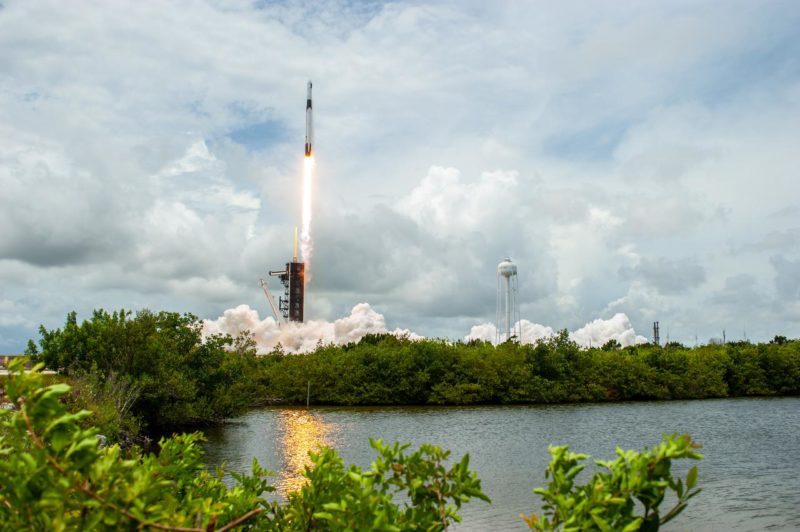
SpaceX has successfully launched its 17th Falcon 9 of 2021, and with the year barely half-done, it has already eclipsed its entire number of flights in 2019 and looks set to soon pass its all-time personal best of 26 missions set in 2020. A brand-new booster core—tailnumbered “B1067”, the first of its kind to see service in 2021—lifted off from historic Pad 39A at the Kennedy Space Center (KSC) in Florida at 1:29:15 p.m. EDT Thursday, carrying the CRS-22 Dragon cargo ship for the International Space Station (ISS).
The mission is being conducted under the second-round Commercial Resupply Services (CRS2) contract between SpaceX and NASA. And although the CRS-22 Dragon itself is a new vehicle, its heat shield has flown before. It previously saw service to guard Dragon Endeavour and Demo-2 astronauts Doug Hurley and Bob Behnken during their fiery return from space last summer.
With arrival at the sprawling orbital outpost anticipated about 5 a.m. EDT Saturday, CRS-22 is laden with 7,337 pounds (3,883 kg) of equipment, payloads and supplies for the incumbent Expedition 65 crew. This includes the first pair of ISS Roll-Out Solar Arrays (iROSAs), part of an effort to furnish the complex with an additional 20-30 percent of power-generation capability.
Following arrival at the station on Saturday, the iROSA pair will be extracted as a complete unit from Dragon’s unpressurized “trunk” on their Integrated Payload Assembly (IPA). Shortly afterwards, in an operation commanded from the ground-based Robotics Officer (ROBO) in Mission Control, they will be transferred to a Payload Orbital Replacement Unit (ORU) Accommodation (POA) interface for temporary storage.
A pair of spacewalks are planned on 16 and 20 June, involving Expedition 65 astronauts Thomas Pesquet (designated “EV1”, with red stripes on the legs of his space suit) and Shane Kimbrough (“EV2”, in a pure white suit) to install and activate the new arrays.
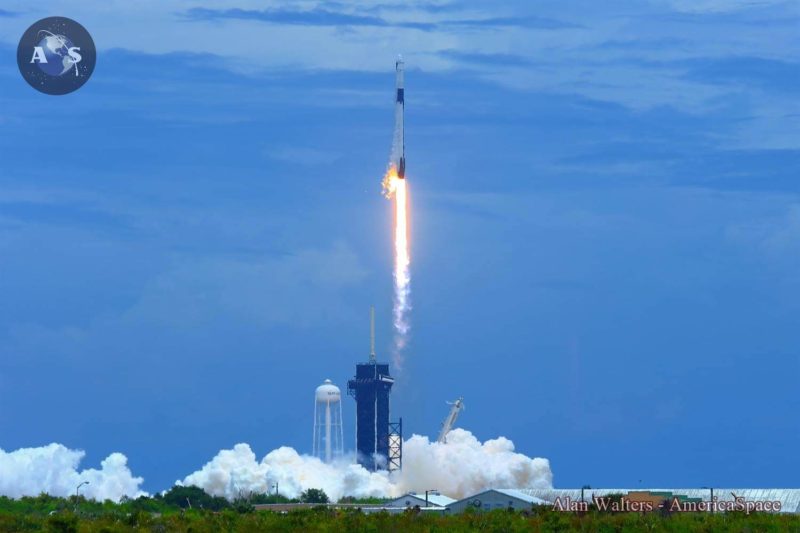
In addition to the iROSA arrays, a multitude of experiments—involving newly-hatched squid, three species of cotton and intriguing microscopic organisms known as “tardigrades”—are also aboard Dragon and are set to form the heart of a number of research investigations over the next few weeks.
It is expected that CRS-22 will depart the station in July. “Dragon time docked is almost always tied to experiment schedules,” NASA’s Dan Huot told AmericaSpace. “We don’t have an official target for undocking on this one…and don’t expect one until sometime into the mission.”
Unusually for a never-before-flown Falcon 9, no Static Fire Test of the nine Merlin 1D+ first-stage engines was conducted at the pad for this mission. At Wednesday’s pre-launch press conference, SpaceX Director of Dragon Mission Management Sarah Walker noted an emphasis to “test like you fly” and explained that all nine engines were tested individually and as part of the integrated first stage whilst at the 6.2-square-mile (16-square-kilometer) Rocket Development Facility in McGregor, Texas.
With two all-up test firings thus behind it, the B1067 core departed McGregor in late April and arrived on the Space Coast in mid-May for a shorter-than-normal pre-launch processing campaign.
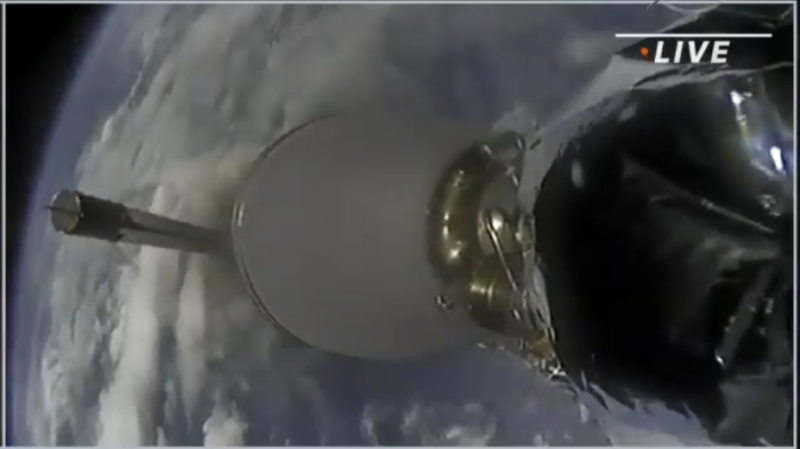
It marks the first time this year that an unused core stage will have been brought newly into service to support a mission. All 16 prior flights in 2021 were conducted using only seven Falcon 9 cores, two of which have now launched four times since January. Last year, it took SpaceX until October to hit its 17th mission, which positions the Hawthorne, Calif.-based organization on track to easily surpass 2020’s all-time record of 26 flights.
Since January, SpaceX has lifted more than 780 Starlink low-orbiting internet communications satellites, together with Turkey’s powerful Türksat-5A geostationary communications satellite and the Transporter-1 rideshare mission, which marked the largest single haul of primary payloads—143—ever lifted by a U.S. vehicle.
Additionally, a Falcon 9 lifted Dragon Endeavour on her second mission to the ISS in April, carrying Crew-2 astronauts Shane Kimbrough, Megan McArthur, Aki Hoshide and Thomas Pesquet for a long-duration increment. And despite still being only half-done, 2021 has seen the first Falcon 9 to fly a tenth time and a record-setting turnaround interval of only 27 days between a pair of launches by the same booster.
Preparations for CRS-22 entered high gear in recent days, with the Cargo Dragon installed atop the Falcon 9 in late May and the complete “stack”—measuring 230 feet (70 meters) from tip to tail—trundled horizontally out to Pad 39A and raised to the vertical on Tuesday.
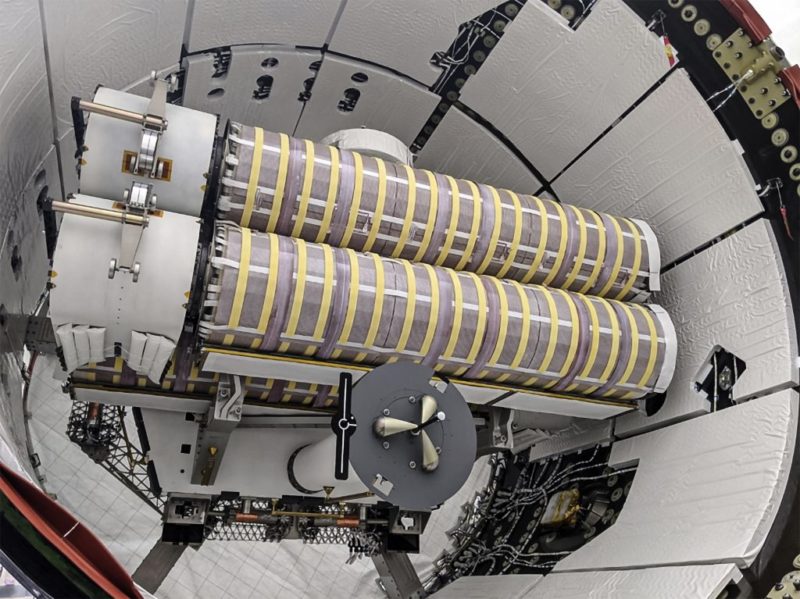
With a noticeable deterioration of the weather outlook, meteorologists at Patrick Space Force Base were predicting only a 60-percent chance of acceptable conditions at T-0. This was driven by extensive atmospheric moisture over the Bahamas, which produced a threat of “lingering clouds and showers” over the Spaceport around launch time.
Potential showstoppers included a possible violation of the Cumulus Cloud Rule and Flight Through Precipitation Rule. Late in the count, around T-18 minutes, lightning warnings were recorded beyond 10 miles (16 km) from the launch complex.
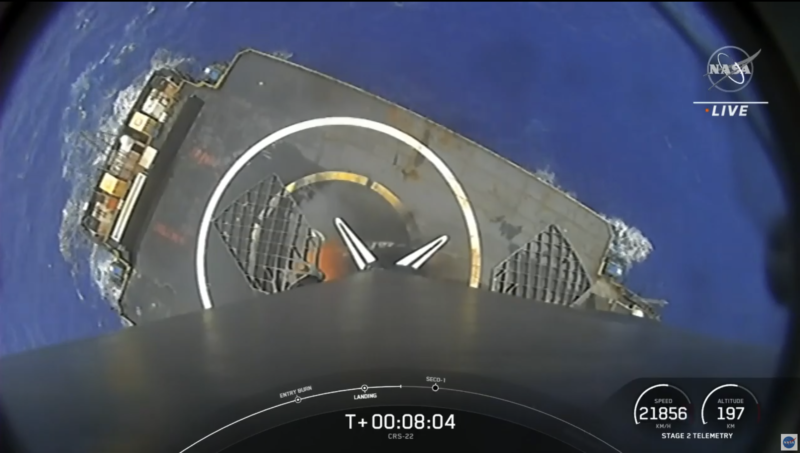
Notwithstanding the gloomy outlook, the Launch Director issued a definitive “Go for Launch” at T-45 seconds. The Falcon 9 roared aloft at 1:29:15 p.m. EDT, precisely at the start—and end—of Thursday’s instantaneous “launch window”. B1067 behaved admirably on her first flight, the nine Merlins burning furiously with a combined thrust of 1.7 million pounds (770,000 kg) for the first 2.5 minutes of flight.
The core then separated from the stack and completed a smooth series of Entry and Landing Burns to alight on the deck of the Autonomous Spaceport Drone Ship (ASDS), “Of Course I Still Love You”, situated some 188 miles (300 km) offshore in the Atlantic Ocean.
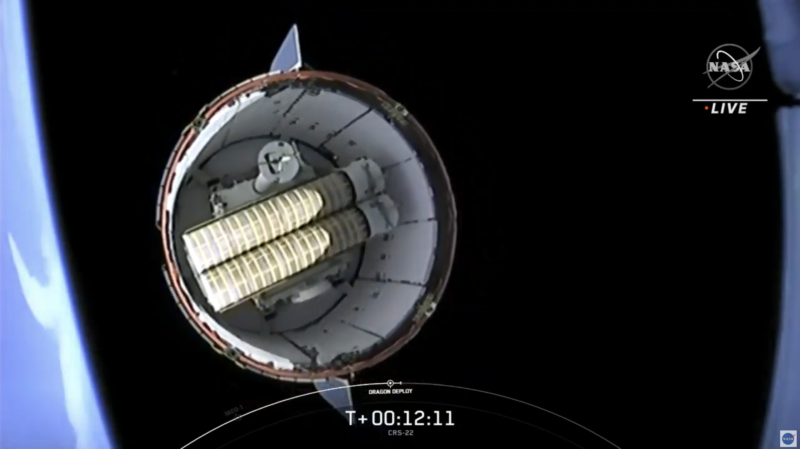
Discounting a failed landing in February, it was the 16th successful drone-ship landing of the year. Next up for B1067 will be duty to lift Crew-3 astronauts Raja Chari, Tom Marshburn, Matthias Maurer and Kayla Barron to the ISS in October.
With the core having done its work, the single Merlin 1D+ Vacuum engine of the Falcon 9’s second stage picked up the thrust with a long burn, lasting about six minutes to deliver Dragon into low-Earth orbit. It shut down about 8.5 minutes after launch and the spacecraft separated and entered free flight at about 12 minutes.
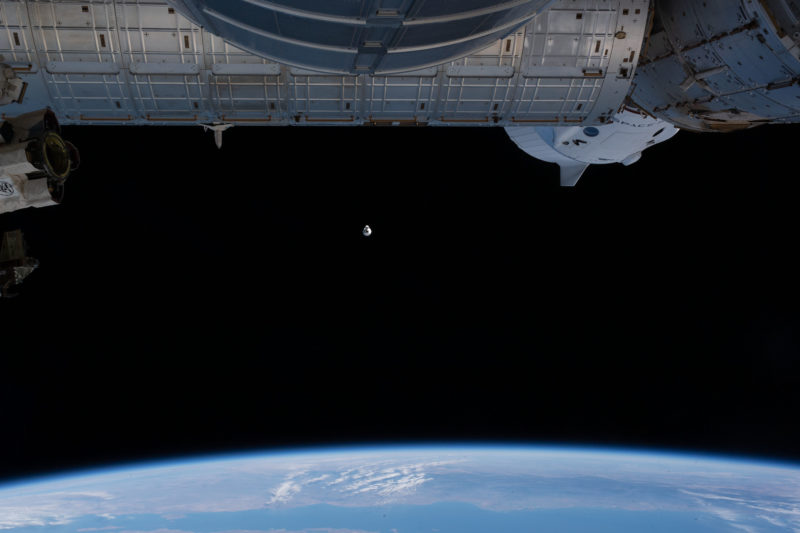
Rendezvous and docking at the ISS is expected around 5 a.m. EDT Saturday, with Dragon due to take up residence on the space-facing (or “zenith”) port of the Harmony node. Expedition 65 astronauts Shane Kimbrough and Megan McArthur will monitor the cargo ship’s arrival.
Unlike earlier incarnations of Dragon, this uprated version docks autonomously at the station, rather than being berthed by the 57.7-foot-long (17.6-meter) Canadarm2. “Duties for crew on approach are significantly different with this version of Dragon,” Mr. Huot told AmericaSpace.
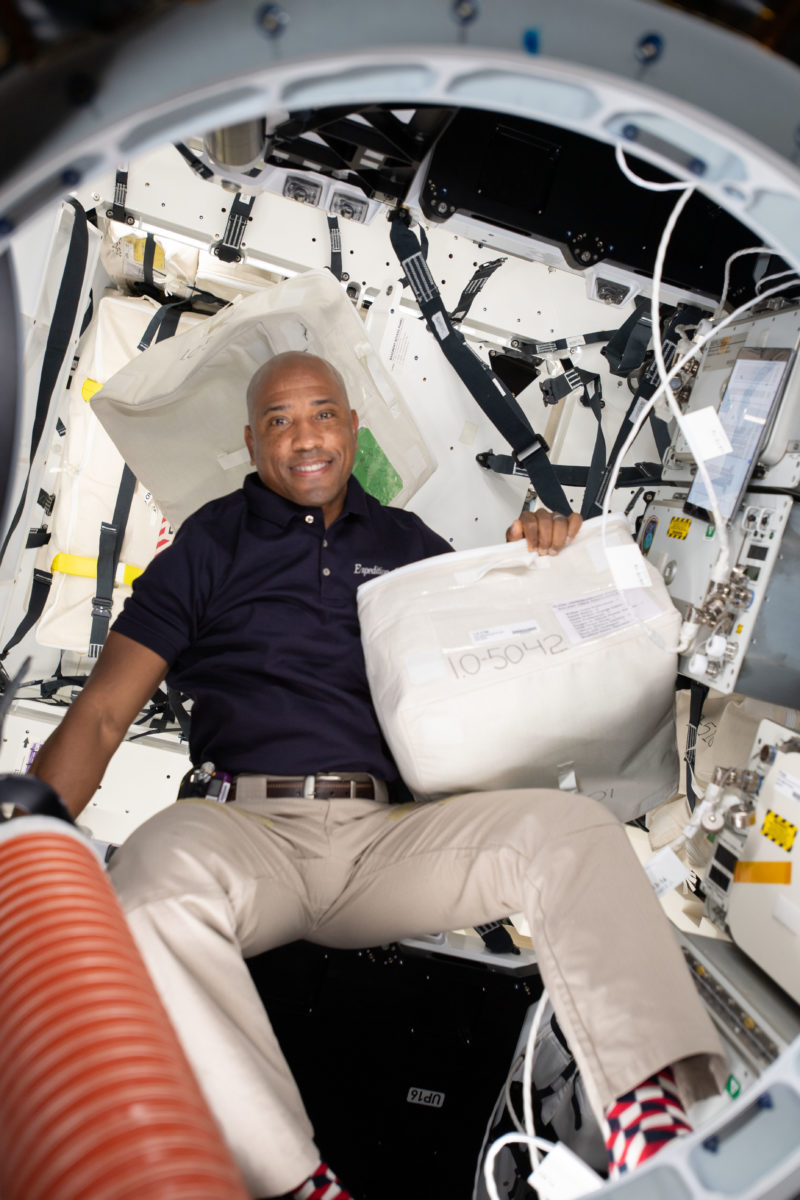
“Crew has no active tasks like they did for capture and are strictly monitoring. They still have full capability to send commands to vehicle for things like abort, but if all goes well they don’t have to send any commands or take any actions for Dragon to dock. Their specific job will be monitoring the approach using cameras and software from the cupola to ensure Dragon’s approach stays in the required corridor.”
And no sooner will the dust have settled from today’s launch before another Falcon 9 is set to fly just after midnight EDT, in the opening minutes of Sunday morning. Veteran core B1063—embarking on her third mission, having previously lifted Crew-1 to orbit last November and Crew-2 in April—will rise from storied Space Launch Complex (SLC)-40 at Cape Canaveral Space Force Station, Fla., laden with the SXM-8 communications satellite for New York-based satellite and online radio broadcaster SiriusXM.
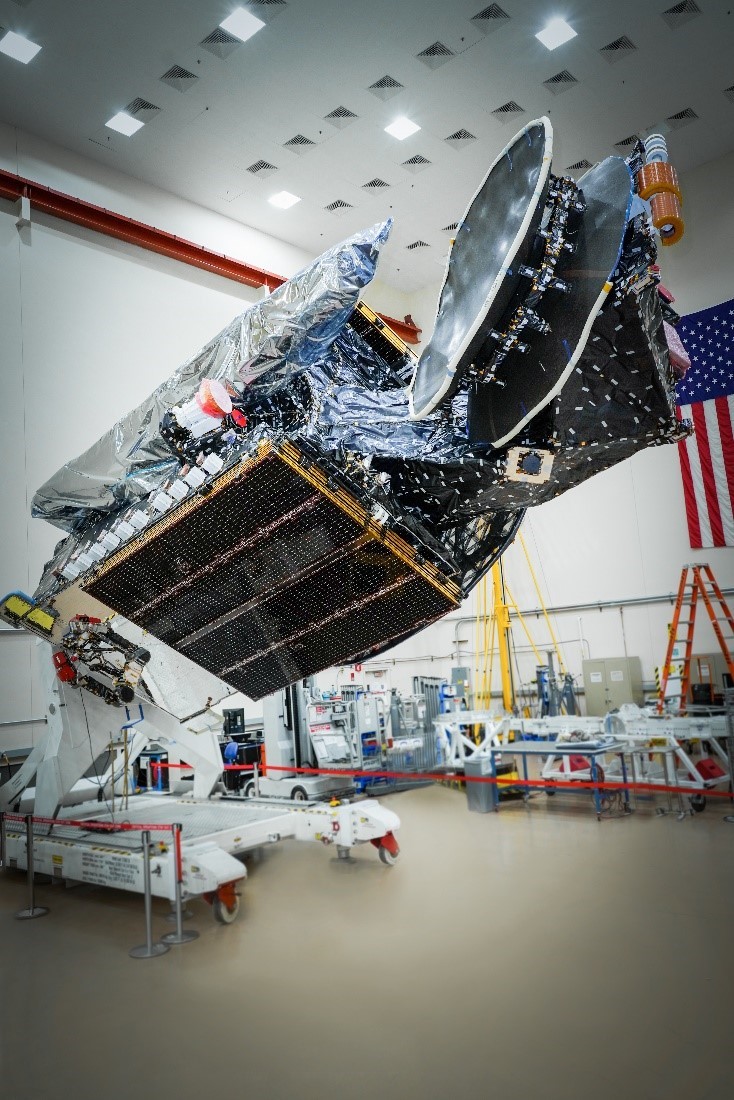
After launch, the 15,400-pound (7,000 kg) payload—which prime contractor Maxar delivered to the Space Coast last month—will execute two weeks of orbit-raising maneuvers, ahead of a month of In-Orbit Testing (IOT), before it enters full operations as a Digital Audio Radio Service (DARS) provider.
Based upon Maxar’s tried-and-true SSL-1300 “bus”, SXM-8 will generate more than 20 kilowatts of electrical power and features large unfurlable S-band antenna reflectors to broadcast directly to radios, bypassing the need for large, ground-based dishes.
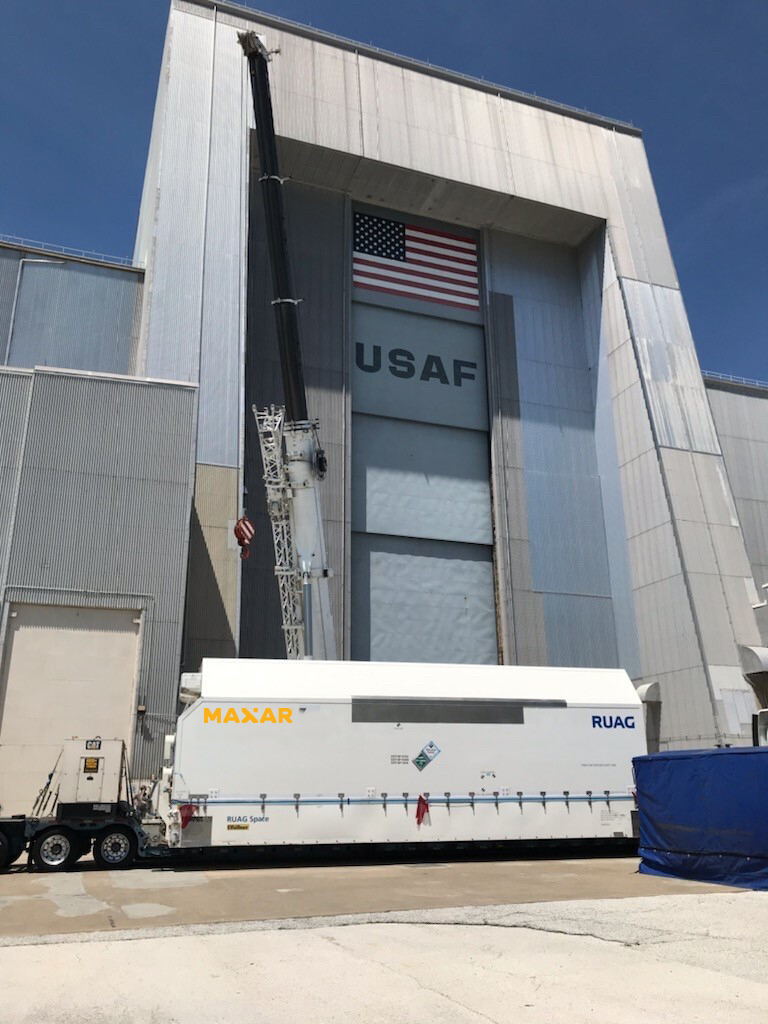
Contracts to build the SXM-7 and SXM-8 satellites were signed back in July 2016, with original expectations that both would be launched by 2020 at the latest. However, although SXM-7 was successfully launched atop a SpaceX Falcon 9 last December, it suffered a series of failures during its IOT phase and was declared a total loss in February 2021.
It was due to replace the aging XM-3 satellite, which has been in orbit at 85 degrees West longitude since early 2005, with SXM-8 expected to replace the October 2006-launched XM-4 at 115 degrees West longitude. Efforts by AmericaSpace to contact SiriusXM to determine the future role of SXM-8 have thus far gone unanswered.
.
FOLLOW AmericaSpace on Facebook and Twitter!
.
.




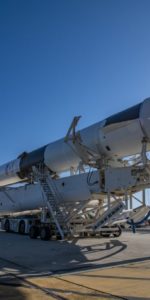
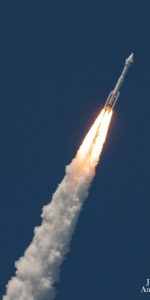
how do we track these dragon resupply missions while they are in transit to the station? i cant seem to find any info anywhere. the ISS will pass overhead tonight, but how far behind/in front will it be?